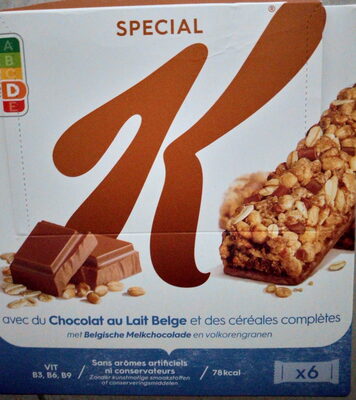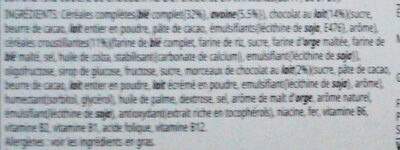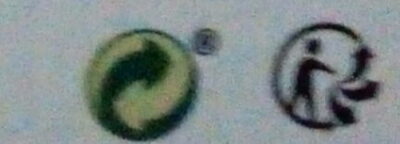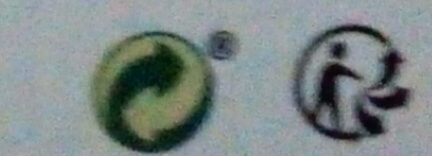Barres de Céréales Special K Chocolat au Lait - Kellogg's - 120 g (6 x 20 g)
Some of the data for this product has been provided directly by the manufacturer KELLOGG'S.
Barcode: 5050083425691 (EAN / EAN-13)
Common name: Barre de céréales avec des pétales de blé complet et des morceaux de chocolat au lait sur une fine couche de chocolat au lait enrichie en vitamines (B3/PP, B6 et B9).
Quantity: 120 g (6 x 20 g)
Packaging: Dry, fr:Étui carton, fr:Étui plastique
Categories: Snacks, Sweet snacks, Cocoa and its products, Confectioneries, Bars, Chocolate candies, Cereal bars, Bars-covered-with-chocolate, Chocolate cereal bars, Chocolate confectionery with dairy filling
Labels, certifications, awards:
No artificial flavors, No preservatives, Source of fibre, Green Dot, High fibres, Nutriscore, Nutriscore Grade D, Rich in vitamin B6, Rich in vitamin B9, Triman, fr:Chocolat au lait belge

Origin of ingredients: Belgium, Unspecified
Link to the product page on the official site of the producer: https://www.kelloggs.fr/fr_FR/products/b...
Stores: Magasins U, Delhaize, carrefour.fr
Matching with your preferences
Other information
Conservation conditions: À conserver dans un endroit sec
Customer service: Service Conseil Consommateurs, Kellogg's Produits Alimentaires S.A.S. - Immeuble Neptune - 1 rue Galilée 93160 Noisy-le-Grand (France)
Report a problem
Data sources
The manufacturer KELLOGG'S uses CodeOnline Food to automatically transmit data and photos for its products.
Manufacturers can use the Open Food Facts free plaform for producers to access and complete this data, and to obtain reports, analysis and product improvements opportunities (e.g. better Nutri-Score).
Product added on by openfoodfacts-contributors
Last edit of product page on by itsjustruby.
Product page also edited by chevalstar, countrybot, date-limite-app, driveoff, ecoscore-impact-estimator, foodvisor, helinya, kiliweb, magasins-u, moon-rabbit, olomorn, org-kellogg-s, packbot, roboto-app, scanbot, tacite, tacite-mass-editor, yuka.R2ZsZU9hNEtsK0JVdHZKZ3J6L1h5K2hWeXJxTlVtKzFjOWhLSVE9PQ, yuka.RnZvcE5wVmN2dEE3dVBGbW9UU0UyNHArNDdXNVFrM3RFTEFPSVE9PQ, yuka.RzZZZ05hQUt0dUlva3NRZTV6bjYrdjVzemJEelJISzdGTE1VSVE9PQ, yuka.U0xzdENJNGYvZUFJdk1BRXdVcjg5ZFpWenNXT0RYRzZJTWtwSVE9PQ, yuka.UTdzblA2WVFscWtqbXNJNm9CZjErT0o0bHNQNVRVZStKZk12SVE9PQ, yuka.UbMfLtGVE-8ZF8P06NIS-2KEMsbQA9UIFnQyog, yuka.V29NdFNMd2VpT1lNcDh3WDlTK00zdjE4bTUyS1JuK0xkKzRKSWc9PQ, yuka.V3JJREwvMGZoZUVOaXZFTzN6WE9xOTllbWJ1UVVrbVpEcmM0SUE9PQ, yuka.VElJRU9vTWJsdGtXbE1JYzB4RGMwT2hhOTd1UlYwYVFFY3d4SVE9PQ, yuka.VFl3cURwUlovTUF4bmZjMTVBL2UwUDE3LzVXU0ExS09GUE5PSVE9PQ, yuka.VjRNa0RaVThyY2hTaHNjWnhBTEk1ODVQMXNEeEF6bXZOcmRCSVE9PQ, yuka.VkowWUdhQWVnYUl0eGRzM3dqMkUyZFlwekxDTVJGS3hEN0FESVE9PQ, yuka.VnFJeU81VTdtc2sxeDlvVnJ5bjd4dmhiK0x1aVVXcVFHK3dxSVE9PQ, yuka.WElvZE82a09xUGhha2RnNThoZm4xdTVPNDYyUFkyL21JcklySVE9PQ, yuka.WTY0NEZva09pOE5ic3ZJKzJ3djQ1OTE1Kzd1NWRFcWVEdkFKSVE9PQ, yuka.Wm81YUVvQmFxOXdneE1ZN3BVak8zZDk2eTcvMlluS01BZTBNSVE9PQ, yuka.WnF3bVNLbzVnTUVhdGNZZTV4YnEzZXB2MVlhalpqMmRCUEZOSUE9PQ, yuka.YTZNcUc3UU5yK05hcE5vZHdUem8yOVFrKzdtbWVFenFDdTFOSVE9PQ, yuka.YTZvNkFQc2F2dElEdThJNDFCL1I5SUp5bksrbkIxT0dldkEySVE9PQ, yuka.YUlNeURxWlEvK2dHd2NBMDlTNzF4Tmg1N0tLcEFGT0dkOGxPSVE9PQ, yuka.YXFSUUFhYzYrdWc0cGNkbjhoSE8vNHhJN0p5RWJYNjNMOG82SUE9PQ, yuka.YjRrQ0tLb2x0UDB0dU13UDJDalEzZWtweGIrRVpsanNjTHNCSWc9PQ, yuka.YmI0T0dybzdwTVFGeFBJZTBpbmt5dDErK2J5bFUzK3JBTlZPSUE9PQ, yuka.ZTZBN0s3NGxpZUFsdmZjUytrK004OHhveDhXSFgwMjNFZk5JSUE9PQ, yuka.ZWJKYUdvTXR0dFZTd3NGajV4YUk5TjlmL3NPV2Qzdm5OZlljSVE9PQ, yuka.ZmZreUg0QS9vYWcxbC9CajBqem8wSTlUM01LVGVXM3BjZUVzSVE9PQ, yuka.ZnZrTU52a0d1dE1hdXNVZDVqejErL0pLNGJueERHQ2xGdmd4SUE9PQ, yuka.sY2b0xO6T85zoF3NwEKvlk59SfXlpD3dOjnQoX2b2NrfD53xOv1Y-KXjLKg.












